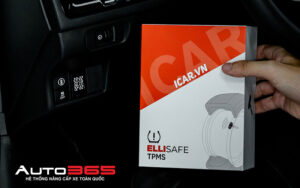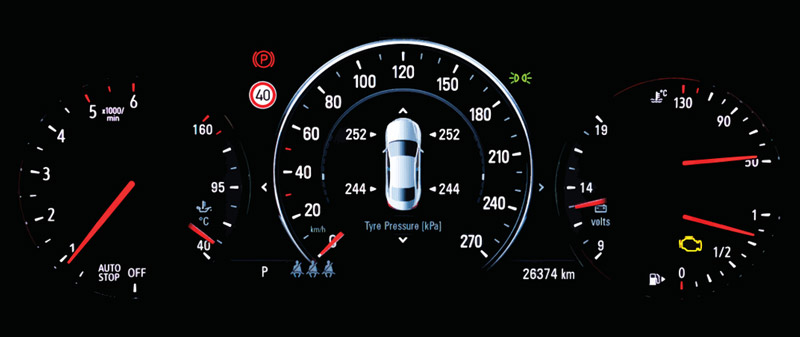Blog
Can TPMS Help Detect Slow Tire Leaks?
Can TPMS Help Detect Slow Tire Leaks?
Tire Pressure Monitoring Systems (TPMS) are vital safety features that alert drivers when their tire pressure drops significantly below the optimal level. But can TPMS detect slow tire leaks that cause gradual loss of air pressure over time? In this article, we’ll explore how TPMS works, its ability to detect slow leaks, and what you should do if your system alerts you to potential tire issues.
What is TPMS?
TPMS is a technology built into vehicles to monitor the air pressure inside the tires. There are two primary types of TPMS:
- Direct TPMS (dTPMS): This system uses sensors inside each tire to measure air pressure directly and sends the data to the vehicle’s onboard computer, which displays the pressure readings on the dashboard.
- Indirect TPMS (iTPMS): Instead of using individual tire sensors, indirect TPMS uses the vehicle’s ABS (Anti-lock Braking System) to monitor tire rotation speed. When a tire is underinflated, it will rotate at a different speed than the other tires, triggering a warning.
Both systems are designed to alert drivers when tire pressure falls too low, potentially preventing dangerous driving conditions like blowouts. However, their ability to detect slow leaks—where air escapes gradually over time—is somewhat limited and varies depending on the type of TPMS and the rate of pressure loss.
How TPMS Detects Tire Pressure Loss
1. Direct TPMS (dTPMS)
Direct TPMS is more effective at detecting pressure changes compared to indirect systems. The sensors inside each tire continuously measure the air pressure and send real-time data to the vehicle’s computer. This allows the system to alert the driver when the pressure drops below a certain threshold (usually 25% below the recommended level).
How it detects slow leaks:
- If a slow leak causes tire pressure to decrease gradually, direct TPMS can pick up on the drop, even if the leak is minor. However, this requires that the pressure loss is significant enough to trigger the warning, typically around 25% below the recommended pressure.
- Slow leaks that cause pressure to drop by less than 1-2 psi per day might not immediately set off the warning, as TPMS systems are calibrated to detect more significant changes in pressure. However, over time, this gradual loss of air pressure may eventually trigger a warning once the drop reaches the threshold.
2. Indirect TPMS (iTPMS)
Indirect TPMS systems, while still valuable, are less effective at detecting slow tire leaks compared to direct systems. Indirect systems do not measure tire pressure directly. Instead, they monitor the speed of each tire’s rotation. When a tire is underinflated, it will rotate at a different speed than the properly inflated tires, and the system alerts the driver.
How it detects slow leaks:
- Slow leaks may not trigger an alert right away because the system depends on differences in rotation speed. If the leak is gradual and the difference in rotation speed is too subtle, the system may not detect the issue until the tire pressure drops significantly.
- Additionally, indirect TPMS systems are more sensitive to rapid changes in tire pressure and may not catch small, ongoing leaks unless they result in a noticeable discrepancy in tire rotation speed.
Can TPMS Detect Very Slow Leaks?
The short answer is: It depends on the rate of the leak and the type of TPMS.
For Direct TPMS:
- Yes, to a point. Direct TPMS can detect slow tire leaks if the pressure loss reaches a certain threshold. If a tire is leaking air at a rate of 1-2 psi per day, the system will likely catch it, but it might take a few days for the warning to appear.
- Small Leaks May Go Undetected. If the pressure loss is minimal—less than 1 psi per day—it may take longer for the system to register a significant enough change. In this case, the slow leak might not be detected until the tire pressure drops to a level that is more noticeable.
For Indirect TPMS:
- Less Likely to Detect Slow Leaks. Indirect TPMS systems are not as reliable at detecting slow leaks, as they depend on tire rotation speed differences. A very gradual loss of pressure might not create enough of a difference in the tire’s rotation speed to trigger a warning.
- Can Detect Significant Leaks Over Time. However, if the slow leak progresses to the point where the tire becomes noticeably underinflated (more than 25% below the recommended pressure), the system will likely trigger an alert.

What to Do if Your TPMS Detects a Slow Leak
If your TPMS alerts you to low tire pressure, it’s essential to investigate the issue, especially if it’s due to a slow leak. Here’s what you can do:
1. Check Tire Pressure Regularly
Even if your TPMS hasn’t triggered an alert, it’s a good idea to regularly check your tire pressure with a manual gauge. This can help you identify slow leaks before they become a serious problem. A gradual loss of 1-2 psi per day can eventually lead to significant underinflation, which can affect fuel efficiency and tire longevity.
2. Inspect the Tire for Visible Damage
Sometimes, slow leaks can be caused by punctures, cracks, or other visible tire damage. Inspect your tires for any nails, screws, or sharp objects embedded in the tread, as well as signs of damage to the sidewalls.
3. Use Soap and Water
If you suspect a slow leak but can’t find visible damage, try the soap-and-water method. Mix a solution of water and dish soap, then apply it to the tire. If bubbles form, you’ve found the source of the leak.
4. Get a Professional Inspection
If you can’t locate the source of the leak or if the TPMS alert persists, take your vehicle to a tire professional. They have specialized equipment, such as tire pressure testers and ultrasonic leak detectors, to identify slow leaks that might not be obvious with a visual inspection.
5. Repair or Replace the Tire
If you find that the slow leak is due to a puncture, it may be possible to repair the tire. However, if the damage is too severe or the tire is worn out, it may be necessary to replace it to ensure the safety and performance of your vehicle.

Conclusion
While TPMS is a great tool for monitoring tire pressure and preventing sudden tire failures, its ability to detect very slow leaks is limited. Direct TPMS systems are generally more capable of detecting slow leaks than indirect systems, but the leak must be significant enough to trigger the warning. For very slow leaks, it’s essential to regularly check your tire pressure manually and inspect your tires for signs of damage. If you suspect a slow leak, it’s always a good idea to have a professional tire inspection to avoid any risks associated with underinflated tires. By staying proactive about tire maintenance, you can ensure a safe and efficient driving experience.


